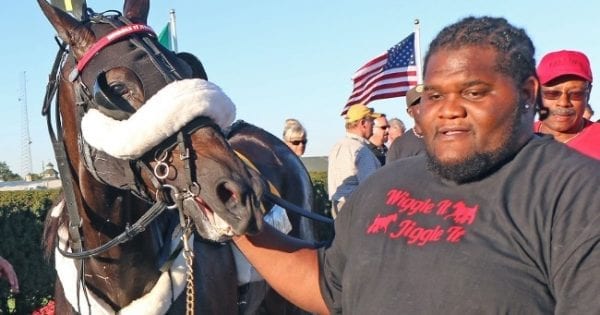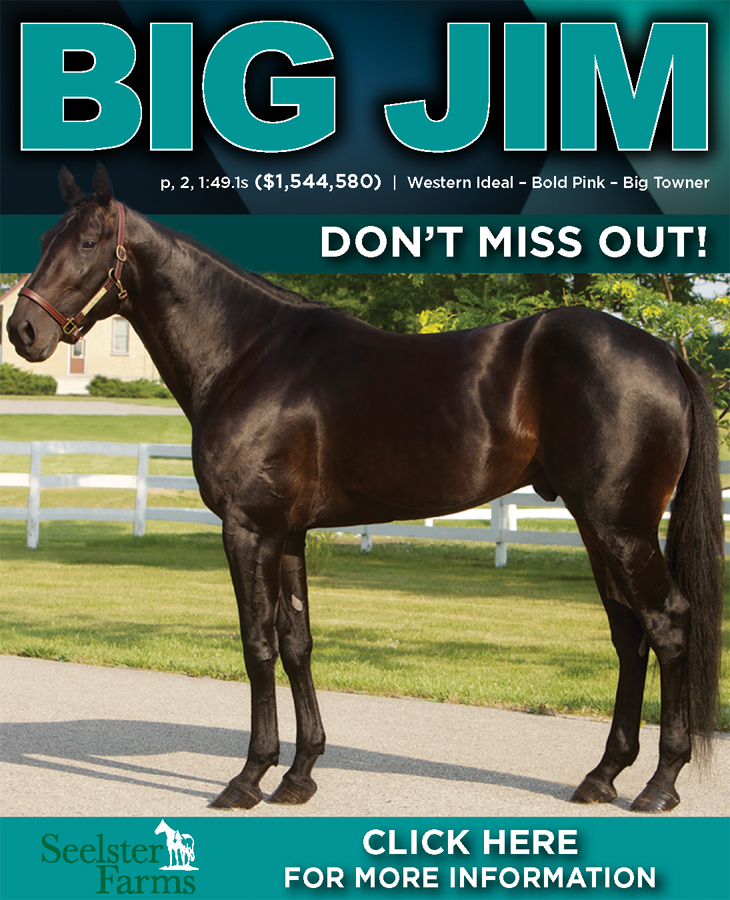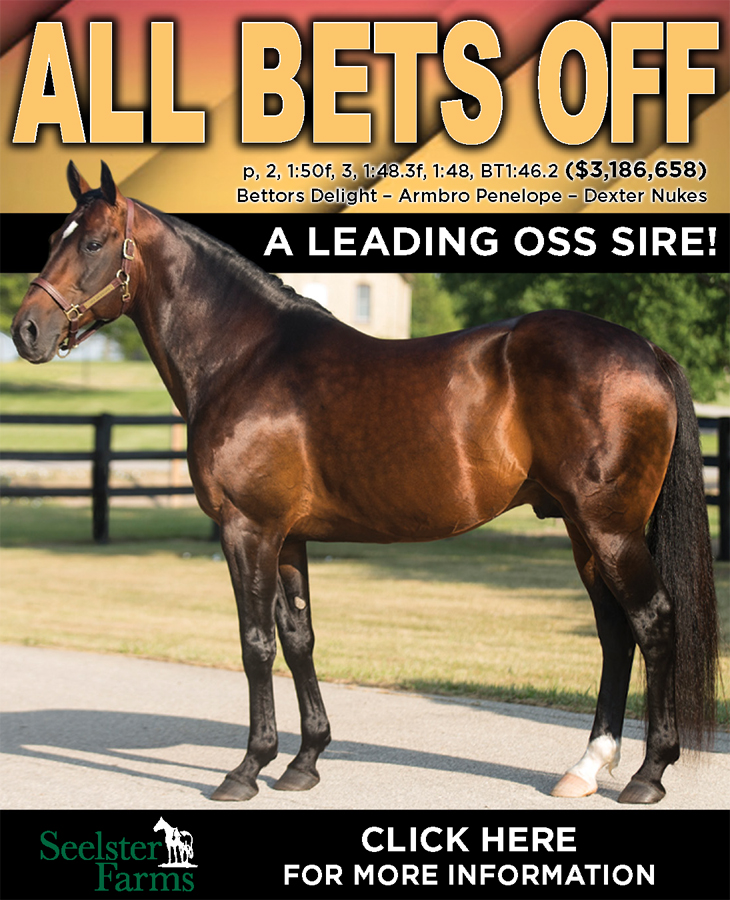

Indiana Rising
Thanks to top stakes horses Wiggle It Jiggleit, Freaky Feet Pete, Always B Miki, Rockin Ron, Colors A Virgin, Natural Herbie and more, Indiana-sired horses are all the rage on the Grand Circuit.
by James Platz
When the trio of Colors A Virgin, Freaky Feet Pete and Always B Miki splashed to Breeders Crown victories last fall at Woodbine, their success shined the spotlight on Indiana’s once-overlooked breeding program. While those breakthrough victories brought new attention to the Hoosier State, they are less the exception and more a growing trend as Indiana-sired horses show they can compete on the national stage with greater frequency.
The biggest story of 2015 was the emergence of superhorse Wiggle It Jiggleit. He excited the racing world with his stellar 22 for 26 record, $2.18 million in seasonal earnings, and gutsy victory in the Little Brown Jug. But before he was voted Horse of the Year, he was first an Indiana-sired product from an up-and-coming program.
The headlines aren’t limited to these four. Natural Herbie shined in 2014 with an impressive victory in the Nat Ray and later in the $250,000 International Trot Preview at Yonkers. Before she was a Breeders Crown champion, Colors A Virgin carried the banner for Indiana with a win in the 2014 Jugette. Then seven-year-old Radar Contact claimed victory in the $150,000 Betsy Ross last year, defeating top pacing mare Anndrovette. Always At My Place set a 1:47.2 world record last August at Mohegan Sun at Pocono Downs. Real Desire-sired Rockin Ron added his name to the list by virtue of his stellar 1:50.1 Confederation Cup victory, setting a Canadian record in the process. And Friday night the Indiana-sired trotter Rose Run Parker turned heads at the Meadowlands with a lightning-fast 1:50.4 in the $25,000 Open Handicap.
“It definitely brings more attention to the program,” said Jessica Barnes, director of Standardbred racing and breed development at the Indiana Horse Racing Commission. “It puts us in the same league as states that are producing top foals. For those that have never looked at Indiana, it shows we are a player in the industry.”
That is a dramatic change from how the Indiana program was perceived as recently as a decade ago. The Crossroads of America was once a destination for stallions given a second chance after not succeeding in other states. The best of the program often struggled to make headway outside Indiana’s borders in Grand Circuit and open competition. The perception has changed, but it has taken time and a change in the landscape. The addition of slots at Indiana’s two racetracks in 2008 served as the catalyst.
When Always A Virgin retired and stood in Indiana beginning with the 2009 breeding season it signaled a new day in the program. Never before had a stallion with the credentials of this Western Ideal stud come to Indiana directly from the racetrack. Getting him to Victory Hill Farm in Lagrange, IN was not “automatic” due to slots says Maria King, who operates the farm with her husband, Jeff.
“I think the owners saw the potential in Indiana,” she explained. “It took a little faith on their part, but it’s really worked out for them.”
Always A Virgin’s early success helped pave the way for other top-flight stallions to call Indiana home, but again, it wasn’t automatic. The arrival and instant success of stallion Rockin Image helped solidify Indiana as a player in the industry. This season, Victory Hill has received well over 250 applicants to breed to Rockin Image. Always A Virgin’s book is nearly full, as is Yankee Glide stallion Guccio, whose first crop will sell at auction this fall. Swan For All, one of the top trotting sires in Indiana, also has a full book for 2016.
“To have three Breeders Crown winners in one season is just amazing. It shows that Indiana can compete on a national level and it wasn’t a fluke,” King said. “It changes the mentality and shows that you can stand a stallion here and be competitive.”
Raising the standard has also changed the mentality of those breeding in Indiana. Now, breeders can’t wait until after their foals drop before deciding to which stallion they will breed their mares. In order to book to the top stallions in the state, that decision has to be made much earlier. Alvin Schwartz, owner of Schwartz Boarding Farm, brought Time To Roll to Indiana for 2016. A Rocknroll Hanover brother to Rockin Image, the stud was well received in his first season.
“By January 15 his book was full or closed,” Schwartz said. “He could have bred a book of 200 mares. I was very, very happy with the interest.”
While slots were the catalyst, interest in the Indiana program has fueled what has become a cyclical effect. More interest has produced a better yearling market. Bullish buyers have provided the capital breeders need to improve their broodmares, thus raising the quality of Indiana-sired yearlings in years to come. That strong market also encourages breeders not currently participating in the program to take another look at Indiana. And while buyers have invested in the Indiana product, a lucrative Indiana Sires Stakes program has helped draw more interest to a program that is not limited to regional status, but is producing Grand Circuit-level talent like Always B Miki, Colors A Virgin, Freaky Feet Pete and Wiggle It Jiggleit.
Steve Cross, sale manager for Hoosier Classic Sale Company, LLC, sees the improvement with each catalog he assembles. In last year’s Hoosier Classic sale, a little over 16 percent of the yearlings cataloged were first foals, showing that reinvestment by breeders. When adding in those that were second foals, the number nearly doubles.
“Our breeders have really stepped up to the plate with the quality of mares they have purchased,” Cross noted. “No question, the quality of the pedigrees has improved. We’ve got mares that I would stack up against any of the better regional programs.”
Cross has seen many new faces at the Hoosier Classic sale purchasing yearlings as of late. Last fall there were 63 new buyers. The year before the sale produced similar results. It shows that interest in the program continues to increase and Indiana-sired horses are marketable, something that is also reflected in the trends Barnes is seeing. According to USTA statistics, 2,824 Indiana-sired horses started in North America in 2015, earning a cumulative $49.3 million in purses. Of that total, more than half – $26 million to be exact – was earned outside Indiana. Last year a total of 29 Indiana-sired horses earned $100,000 or more competing in the state. A group of 90 horses earned at least $50,000 racing in Indiana last season.
“I’ve gotten a lot of calls from people that want to know how the program works or are first-time Indiana-sired owners,” added Barnes. “I’ve heard from people a few days before the Blooded Horse Sale or shortly after that have purchased an Indiana-sired horse or intend to that have never participated in the Indiana program. It further sends the message that we have a valuable program in Indiana that shouldn’t be overlooked.”















